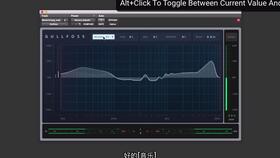Content:
Introduction: Fishing is an ancient and cherished pastime that has been enjoyed by countless enthusiasts for generations. Whether you are a seasoned angler or a beginner looking to explore the world of fishing, having a good rod is essential. A new fishing rod can be a thrilling addition to your gear, but it can also be daunting to learn how to use it effectively. In this article, we will delve into the art of familiarizing yourself with new竿钓鱼技巧, helping you become a confident and skilled angler in no time.
Familiarize Yourself with the Rod: Before you start fishing with your new rod, it is crucial to become familiar with its components and features. Here are some key elements to pay attention to:
a. Length: The length of the rod will determine the type of fishing you can do. Longer rods are suitable for casting and reaching distant targets, while shorter rods are better for close-range fishing.
b. Action: The action of a rod refers to how it bends when pressure is applied. There are three main types of action: fast, medium, and slow. Fast-action rods are ideal for casting light lures, while slow-action rods are better for heavy-duty fishing.
c. Power: The power of a rod determines its ability to handle heavy fish. A rod with high power is suitable for larger fish, while a rod with low power is ideal for smaller fish.
d. Line Weight: The line weight of a rod is the recommended weight range for the line you should use with it. Ensure that the line weight matches the rod's power and action.
Learn the Basics of Casting: Casting is a fundamental skill in fishing, and mastering it will enhance your overall experience. Here are some tips to help you get started:
a. Grip the Rod: Hold the rod with a comfortable grip, using your index finger and thumb to wrap around the handle. Your other fingers should be curled around the rod's lower section.
b. Position Your Feet: Stand with your feet shoulder-width apart, and position your body so that the rod is parallel to your target.
c. Load the Rod: To load the rod, begin by lifting it with a smooth, upward motion. As you do this, let the line flow out through your fingers until the rod is fully loaded.
d. Cast: To cast, bring the rod back to your shoulder and then forward, using a smooth, controlled motion. As the rod reaches its peak, release the line, allowing it to fly through the air.
Practice Bait Presentation: Bait presentation is essential for attracting fish to your lure. Here are some tips to help you improve your technique:
a. Work the Bait: Whether you are using live bait or artificial lures, it is crucial to work the bait in a way that mimics the natural movement of the prey. Experiment with different retrieves and presentations to see what works best.
b. Adjust Your Speed: The speed at which you retrieve your bait can make a significant difference. Slow down when fishing in clear water or when targeting finicky fish, and increase speed when fishing in murky water or targeting more aggressive fish.
c. Watch for Signs of Interest: Pay close attention to the water and your bait. If you see fish rising or following your lure, it's a good sign that they are interested. Adjust your presentation accordingly.
Learn to Set the Hook: Once you have attracted a fish, it's time to set the hook. Here's how to do it:
a. Keep a Light Touch: When a fish bites, keep your rod tip slightly elevated and your line tension light. This allows the fish to take the bait without feeling resistance.
b. Feel the Bump: When you feel a bump or pull on the line, it's likely that a fish has taken the bait. At this point, quickly and smoothly lift the rod tip, setting the hook into the fish's mouth.

Land Your Catch: Congratulations, you've hooked a fish! Now it's time to land it. Here are some tips to help you bring your catch to the boat or shore:
a. Keep a Steady Pressure: Apply steady pressure on the line to tire the fish and bring it closer to the boat or shore.
b. Guide the Fish: If possible, guide the fish towards the boat or shore using the current and your rod. Avoid making sudden movements that could cause the fish to break off.
c. Use a Net: Once the fish is close enough, use a net to scoop it out of the water. Be gentle and avoid handling the fish unnecessarily to minimize stress.
Conclusion: Familiarizing yourself with new竿钓鱼技巧 is essential for a successful and enjoyable fishing experience. By understanding the components of your rod, mastering casting and bait presentation, and learning how to set the hook and land your catch, you'll be well on your way to becoming a skilled angler. Remember to practice regularly and always prioritize safety and ethical fishing practices. Happy fishing!












